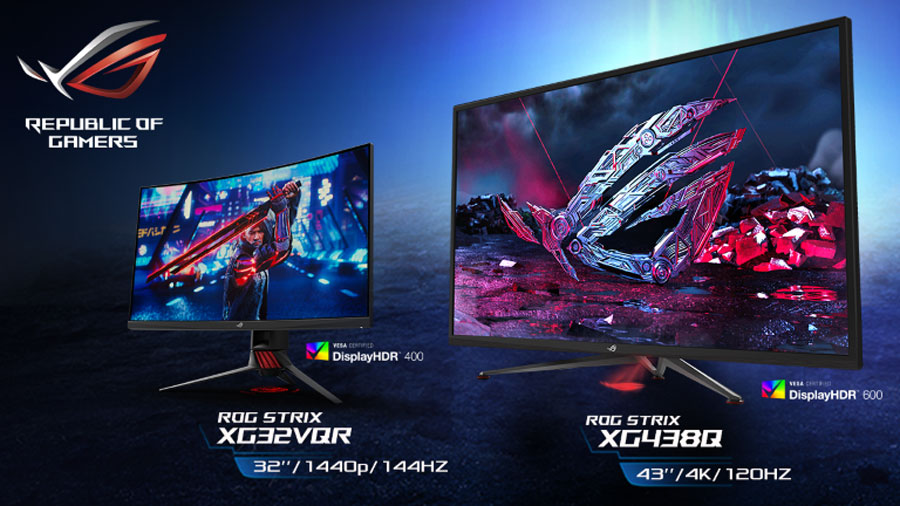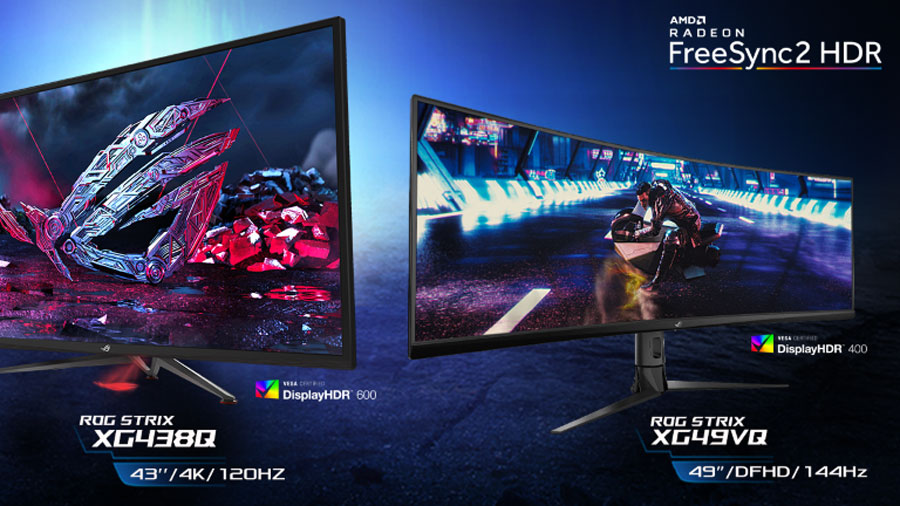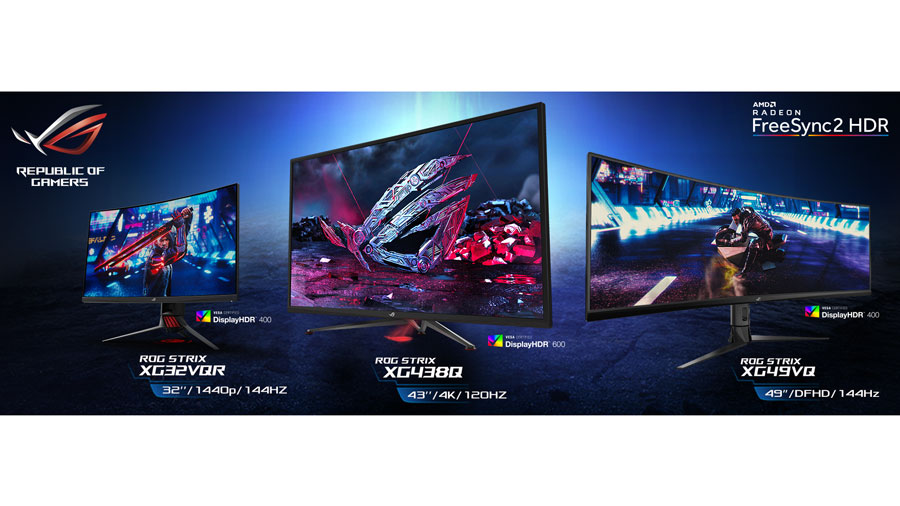Trio of high-refresh rate and up to 4K-resolution gaming monitors with FreeSync2 HDR
ASUS Republic of Gamers (ROG) today is excited to introduce the new Strix XG HDR gaming monitor lineup, a trio of FreeSync2 HDR monitors built for high-refresh rate and stutter-free gaming, and available in up to 4K resolution or 144Hz refresh rate in big-screen, super ultra-wide and curved formats.
| XG438Q | XG49VQ | XG32VQR | |
| Panel Size (Diagonal) | 43″ (16:9) | 49″ (32:9) | 31.5″ (16:9) |
| Panel Backlight / Type | VA panel | VA panel | VA panel |
| Color Saturation | DCI-P3 90% | DCI-P3 90% | DCI-P3 94% |
| Brightness | 450cd/m2 (typical) | 450cd/m2 (typical) | 450cd/m2 (typical) |
| Response Time | 4ms (GTG) | 4ms (GTG) | 4ms (GTG) |
| True Resolution/ Refresh Rate | 3840 x 2160 @ 120Hz | 3840 x 1080 @ 144Hz | 2560 x 1440@144Hz |
| HDR Support | Radeon™ FreeSync 2 HDR | Radeon™ FreeSync 2 HDR | Radeon™ FreeSync 2 HDR |
| DisplayHDR 600 compliant | DisplayHDR 400 compliant | DisplayHDR 400 compliant | |
| Stereo Speaker | 10W x 2 | 5W x2 | NA |
It’s game time
AMD’s first-generation FreeSync introduced a variable refresh rate capability that eliminated the screen tearing and stuttering artifacts caused by turning v-sync off or on. Compatible monitors could match their refresh to the graphics card’s frame rate within a pre-defined range. Below the lower threshold of that range, however, v-sync kicked back in and caused judder.
FreeSync 2 HDR delivers smoother gameplay below the variable refresh range using a feature called Low Framerate Compensation. The LFC algorithm monitors performance and adaptively inserts frames to maintain fluid animation where v-sync would have caused choppy behavior. LFC is great to have, particularly at a demanding resolution like 4K. But a wide variable refresh range between 48 and 144Hz means most of the time gaming is spent in these ROG Strix XG monitors’ sweet spot, taking advantage of AMD’s FreeSync technology with Radeon RX graphics cards.

The trio of ROG Strix XG monitors is also optimized to minimize input lag. This delay between an input and the signal’s appearance on-screen can be a real problem on monitors and TVs that perform a lot of image processing in the background. Optimizing the display pipeline with ASUS GameFast Input Technology makes it so that gamers can see and react to on-screen actions milliseconds faster than their opponents. The trio of ROG Strix XG monitors benefit further from FreeSync 2 HDR support, which has HDR-enabled games tone map directly to the monitor’s color space, eliminating an entire tone mapping step and its associated latency.

All 3 Strix XG monitors have GamePlus Technology, an ASUS-exclusive feature that overlays in-game enhancements on top of the action. With the press of a hotkey, different types of crosshairs are available to improve aiming in first-person shooters that lack a reticle. Other options include a frame rate monitor, an in-game timer, and an alignment tool for multi-monitor setups.
AVAILABILITY & PRICING
Expect the XG49VQ and XG32VQ to be available end of January 2019. Expect the XG438Q to be available in spring 2019. Please visit the ASUS Edge Up feature article for additional details on the ROG Strix XG monitors.
